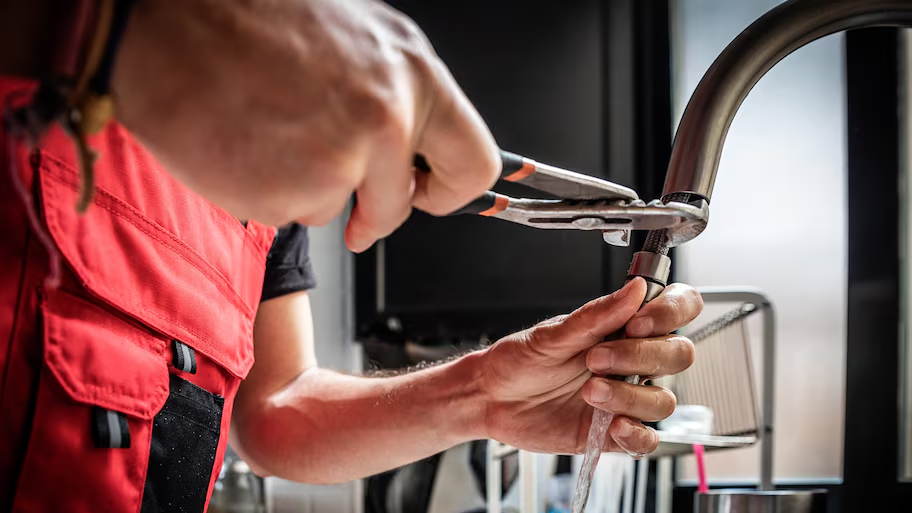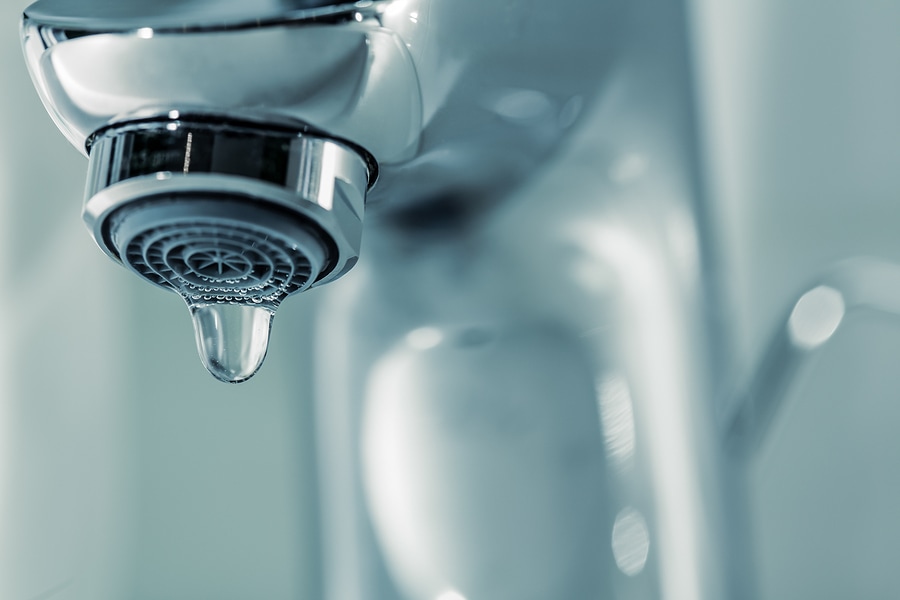Everybody maintains their unique conception involving Should I Repair or Replace a Leaky Faucet?.

Dripping faucets might appear like a small aggravation, yet their influence surpasses just the nuisance of the noise. From wasting water to incurring unneeded economic expenses and health and wellness risks, neglecting a leaking faucet can bring about numerous repercussions. In this article, we'll look into why it's vital to address this usual home concern immediately and effectively.
Wastefulness of Water
Ecological Effect
Trickling faucets add significantly to water waste. According to the Epa (EPA), a single tap trickling at one drip per second can lose greater than 3,000 gallons of water each year. This not just strains water sources yet also influences communities and wildlife dependent on them.
Step-by-Step Overview to Fixing a Dripping Faucet
Devices Called for
Prior to trying to fix a trickling tap, collect the needed tools, including a flexible wrench, screwdrivers, substitute parts (such as washers or cartridges), and plumber's tape.
Usual Tap Issues and Their Solutions
Recognize the sort of tap and the particular problem creating the drip. Typical problems consist of damaged washing machines, corroded shutoff seats, or defective O-rings. Refer to manufacturer instructions or online tutorials for detailed support on fixings.
Financial Expenses
Increased Water Costs
Beyond the environmental impact, dripping taps can blow up water costs significantly. The built up wastage with time equates right into higher utility expenditures, which might have been stayed clear of with timely repair services.
Potential Property Damage
Additionally, extended dripping can result in damage to components and surface areas bordering the tap. Water accumulation can cause staining, corrosion, and even structural problems if left ignored, leading to extra repair service expenses.
Health Concerns
Mold and Mold Development
The consistent existence of wetness from a dripping faucet creates an optimal atmosphere for mold and mold growth. These fungis not only compromise interior air high quality but also position health and wellness risks, specifically for individuals with respiratory conditions or allergic reactions.
Waterborne Diseases
Stagnant water in dripping faucets can come to be a breeding place for bacteria and other microorganisms, boosting the risk of waterborne diseases. Impurities such as Legionella microorganisms grow in stationary water, potentially resulting in severe diseases when consumed or breathed in.
DIY vs. Expert Repair service
Benefits and drawbacks of Do It Yourself Repair Work
While some might attempt to take care of a leaking tap themselves, do it yourself repair services come with their own collection of challenges. Without proper expertise and devices, DIY efforts can exacerbate the concern or bring about insufficient repair work, prolonging the trouble.
Benefits of Hiring an Expert Plumber
Employing a specialist plumber makes sure that the underlying reason for the trickling tap is addressed properly. Plumbers possess the proficiency and equipment to identify and repair faucet concerns effectively, conserving time and minimizing the danger of more damage.
Environmental Obligation
Individual Payment to Preservation
Taking responsibility for dealing with dripping faucets lines up with more comprehensive efforts towards water conservation and environmental sustainability. Every person's activities jointly make a significant influence on protecting precious sources.
Lasting Living Practices
By prioritizing prompt repair services and adopting water-saving routines, individuals contribute to sustainable living practices that benefit both present and future generations.
Safety nets
Routine Maintenance Tips
To stop dripping faucets, perform routine upkeep such as cleaning aerators, checking for leaks, and replacing damaged parts promptly. Additionally, think about mounting water-saving devices or upgrading to much more reliable components.
Value of Prompt Repair Works
Attending to trickling taps as quickly as they're noticed protects against more water wastage and possible damages, ultimately conserving both water and money in the long run.
Impact on Building Value
Assumption of Well-Maintained Building
Preserving a home in good condition, consisting of addressing maintenance issues like dripping taps, boosts its viewed worth and worth among possible customers or renters.
Impact on Resale Value
Properties with well-maintained plumbing components, including taps, command greater resale worths in the property market. Dealing with leaking faucets can add to a favorable impression throughout residential or commercial property assessments and negotiations.
Conclusion
Addressing a dripping tap surpasses simple ease; it's an essential action toward preserving water, lowering monetary costs, and guarding wellness and building. Whether with DIY fixings or specialist help, taking action to take care of dripping faucets is a tiny yet impactful method to advertise responsible stewardship of sources and contribute to a much healthier, extra sustainable future.
How to Fix a Leaky Faucet: Step-by-Step Repair Guide
A leaky faucet may seem like a simple annoyance, but if it's not fixed promptly, that leak could cost hundreds to potentially thousands. From water damage to mold, mildew, and high water bills, even a tiny leak can be catastrophic if left unattended. Damage like this can even affect the overall value of your home, so it's important to take the right approach for leaky faucet repair. You may need the help of a plumber in some cases, but we've got a few tips you can try on how to fix a leaky faucet before calling the pros.
Four Faucet Types
When you're learning how to fix a leaky faucet, the first step is knowing what kind of faucet you're working with! There are four common types.
Cartridge Faucets
Cartridge faucets come in one- or two-handled varieties. In one-handled cartridge faucets, hot and cold water combines in a single cartridge. In the two-handled versions, hot and cold water are controlled separately and mixed in the faucet.
Ball Faucets
Ball faucets have a single lever you push up and down to adjust the pressure and rotate to change the temperature. A slotted metal ball controls the amount of water allowed into the spout.
Compression Washer Faucets
They're the oldest type of faucet, but they're still used in many homes — especially older ones. Compression faucets have two separate handles that, when turned, raise or lower the washer that seals a water valve. This valve stops water from flowing through the faucet when it is turned off.
Disc Faucets
Disc faucets rarely need to be repaired due to their maintenance-free design. The water flow is controlled by two discs — the upper one raises and lowers against a fixed lower disc, creating a watertight seal. If your disc faucet starts leaking, you may need to replace the seals or clean residue buildup from the inlets.
Fixing a Leaky Faucet
Step 1: Turn Off the Water
Whether you're learning how to fix a leaky bathtub faucet or how to fix a leaky kitchen faucet, always turn off the water supply to your working area when you're fixing a leak. The last thing you want is a flood added to your list of things to fix.
Look for the shutoff valves below your sink or around the tub and turn them clockwise to stop the water flow. If your faucet doesn't have shutoff valves, you may need to turn off the water for the whole house. Check to make sure it's off by turning the faucet on. If nothing comes out, you're ready to start the repair.
Step 2: Take Apart the Faucet
How you disassemble your faucet depends on the type of fixture you have. You can use a flathead screwdriver to remove the caps on top of the handle or handles for cartridge and compression faucets. Inside, you should see handle screws. Unscrew these with a screwdriver to remove the handle.
Disc- and ball-style faucets will typically have an inlet screw near the handle, and removing that will reveal the interior of the faucet.
Detach the Valve Stem
For cartridge- and compression-style faucets, you'll see the inner valve stem or cartridge once you remove the faucet handles. If you have a compression faucet, unscrew the brass valve stem. If you have a cartridge faucet, pull out the cartridge. If your cartridge has been in place for a while, it may require some tools or extra force to remove it due to mineral deposits.
Examine and Replace Parts
Once you've removed the parts, check them out to confirm what needs to be replaced. You may see corroded rubber washers, O-rings, stems, or cartridges. On a ball-style faucet, check the seats and springs for damage.
If you need to repair a leaky disc faucet, check the inlet and seals on the lower disc.
Once you determine what parts must be replaced, visit your local hardware store. Bring the damaged parts with you to ensure you can purchase the correct components to replace them.
Clean Valves and Faucet Cavity
If you've removed a stem or cartridge, you may notice mineral buildup in the faucet's threads. Use white vinegar to clean the valve seat by soaking it for a few minutes, then scrub it away with a soft toothbrush and rinse with warm water. You can also clean the interior of the faucet in the same way.
Reassemble the Faucet
Once your faucet is cleaned and the required parts have been replaced, it's time to reassemble it. Put the pieces back together and slowly turn the water supply back on. Doing this slowly is crucial because too much initial water pressure can damage the new hardware you've just installed.
https://homewarranty.firstam.com/blog/how-to-fix-leaky-faucet

We had been shown that article on 4 Common Reasons for a Leaky Faucet through someone on a different website. Are you aware of somebody else who is curious about the subject? Please feel free to share it. We cherish reading our article about Should I Repair or Replace a Leaky Faucet?.
Comments on “Uncovering the Significance of Dealing with a Dripping Faucet”